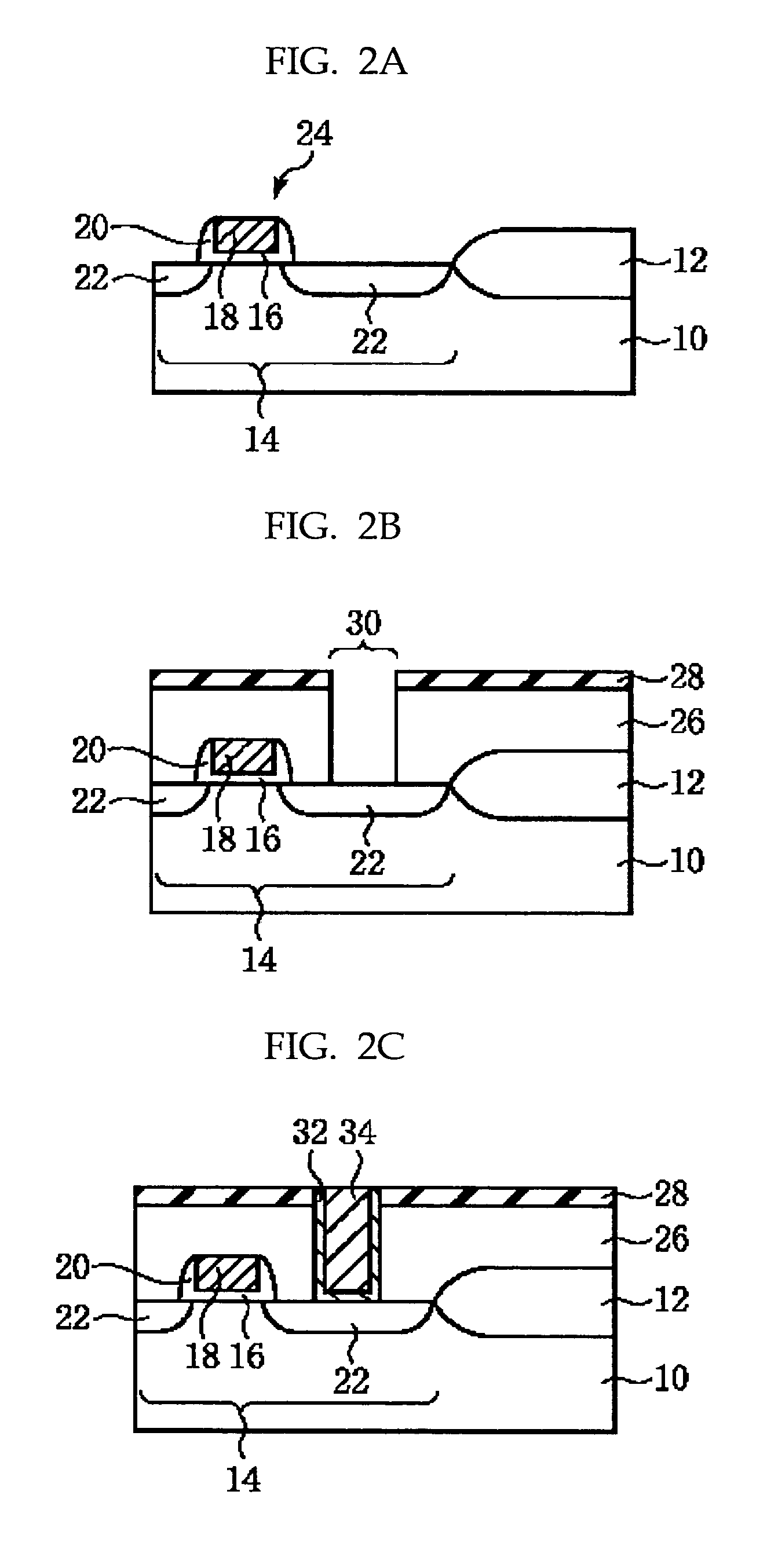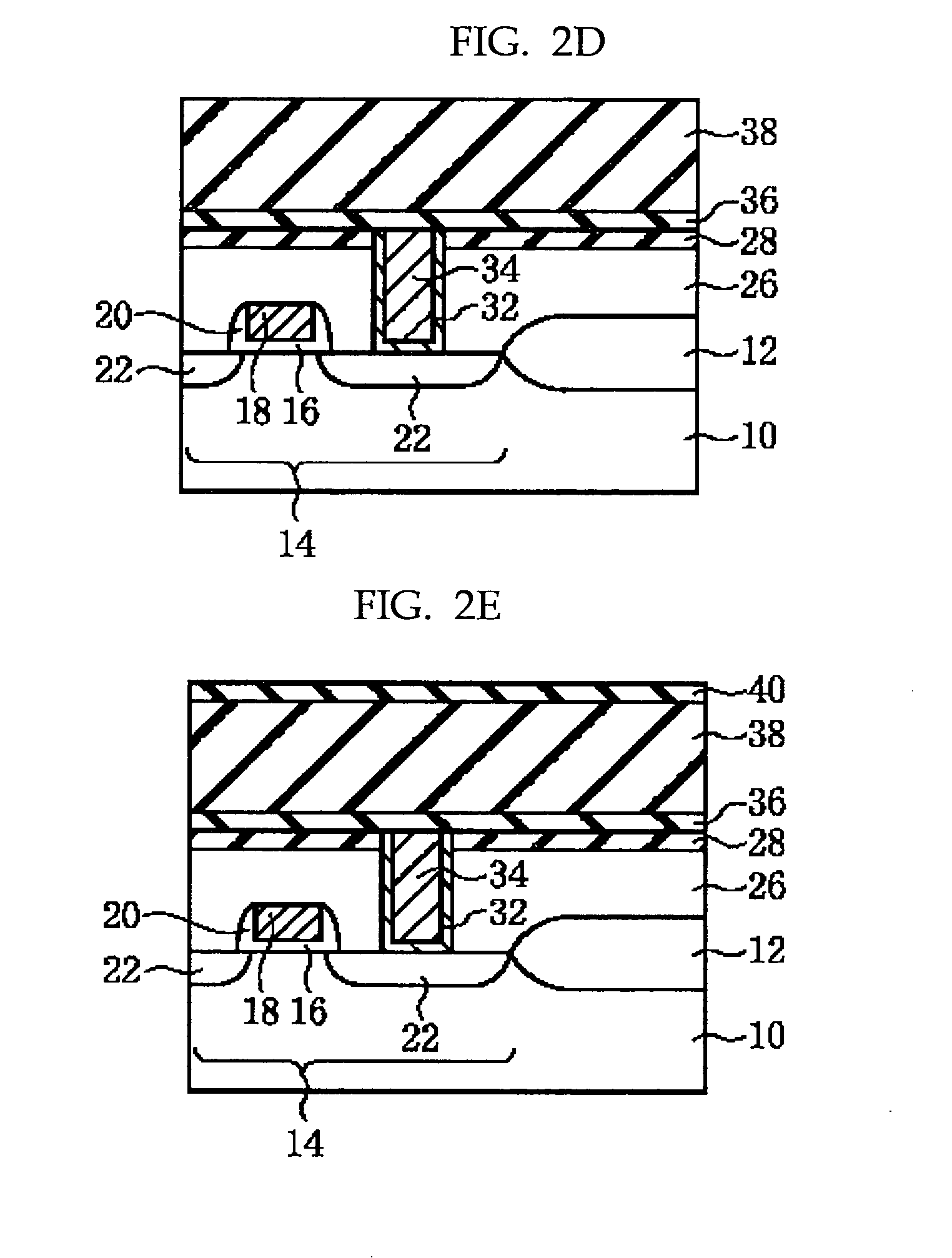Material for forming exposure light-blocking film, multilayer interconnection structure and manufacturing method thereof, and semiconductor device
a technology of exposure light and film, which is applied in the direction of semiconductor/solid-state device details, instruments, photomechanical equipment, etc., can solve the problems of increasing the interconnection resistance (r), the interconnection delay is not easy to achieve, and the damage to the semiconductor device is easy to damage, and the damage to the semiconductor device is easy to preven
- Summary
- Abstract
- Description
- Claims
- Application Information
AI Technical Summary
Benefits of technology
Problems solved by technology
Method used
Image
Examples
example 1
—Preparation of Material for Forming an Exposure Light-Blocking Film—
[0154] At least one of R1 and R2 in a polycarbosilane expressed by the structural formula (1) was halogenated and reacted with Grignard reagent containing a vinyl group—a substitutent capable of absorbing ultraviolet light. In this way a material for forming an exposure light-blocking film, which contains a polycarbosilane expressed by the structural formula (1) where at least one of R1 and R2 is replaced by a vinyl group was prepared.
—Manufacturing of the Multilayer Interconnection Structure and Semiconductor Device—
[0155] Both the multilayer interconnection structure and semiconductor device of the present invention were manufactured in the manner described below. At first, as shown in FIG. 2A, an element separation film 12 was formed on a semiconductor substrate 10 with a LOCOS (Local Oxidation of Silicon) method. The element separation film 12 defined an element region 14. Note that a silicon substrate was ado...
examples 2 to 12
[0181] Semiconductor devices were manufactured in a manner similar to that described in Example 1 except that the material for forming an exposure light-blocking film was changed to those shown in Table 1 and an exposure light-blocking film was formed as the first interlayer insulating film. In addition, the effective permittivities of the resultant semiconductor devices, semiconductor device manufacturing yields, and the reduction in the amounts of the porous insulating films provided below the exposure light-blocking film were measured in a manner similar to that described in Example 1. The results are also shown in Table 1.
[0182] Note in Examples 2, 4, 6, 8, 10 and 12 that as the third interlayer insulating film a SiC film capable of admitting ultraviolet light was formed on the porous insulating film that serves as the second interlayer insulating film, and that ultraviolet light was applied on the porous insulating film for curing through the SiC film.
PUM
| Property | Measurement | Unit |
|---|---|---|
| Temperature | aaaaa | aaaaa |
| Temperature | aaaaa | aaaaa |
| Fraction | aaaaa | aaaaa |
Abstract
Description
Claims
Application Information
 Login to View More
Login to View More - R&D
- Intellectual Property
- Life Sciences
- Materials
- Tech Scout
- Unparalleled Data Quality
- Higher Quality Content
- 60% Fewer Hallucinations
Browse by: Latest US Patents, China's latest patents, Technical Efficacy Thesaurus, Application Domain, Technology Topic, Popular Technical Reports.
© 2025 PatSnap. All rights reserved.Legal|Privacy policy|Modern Slavery Act Transparency Statement|Sitemap|About US| Contact US: help@patsnap.com



